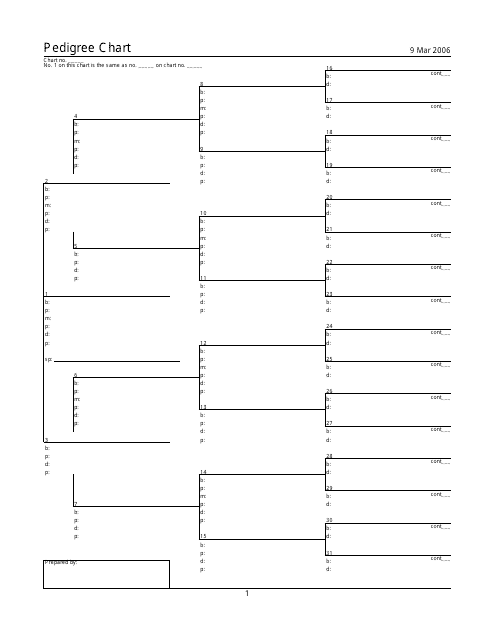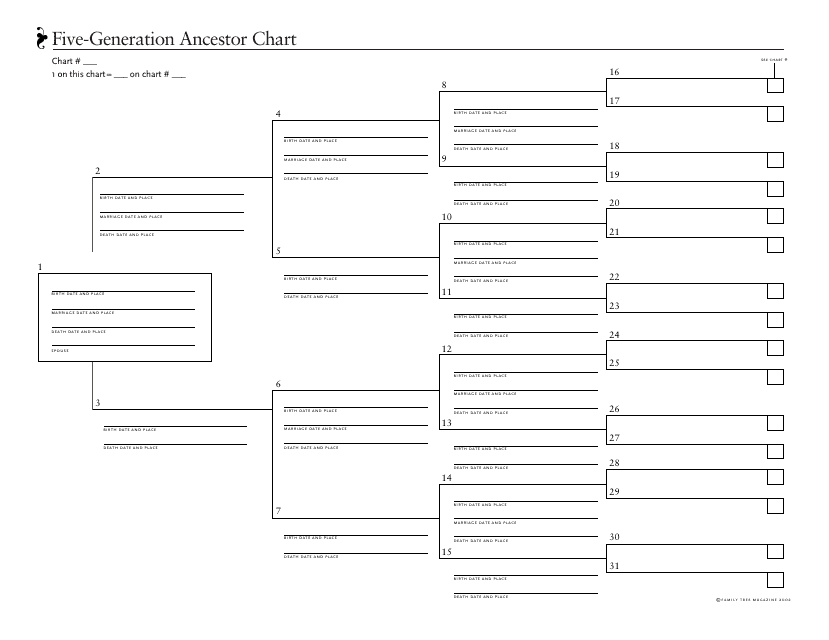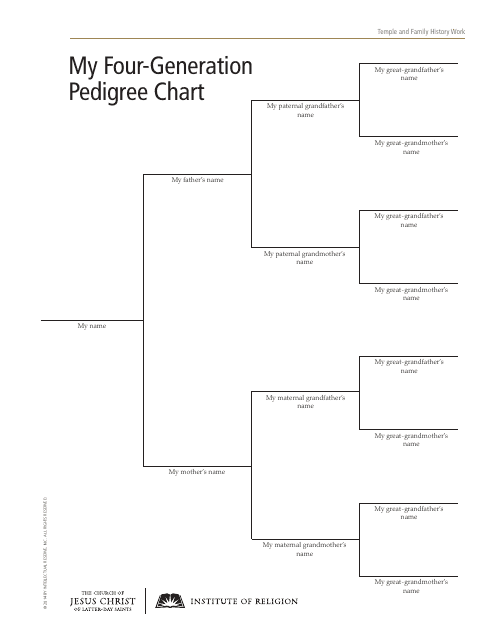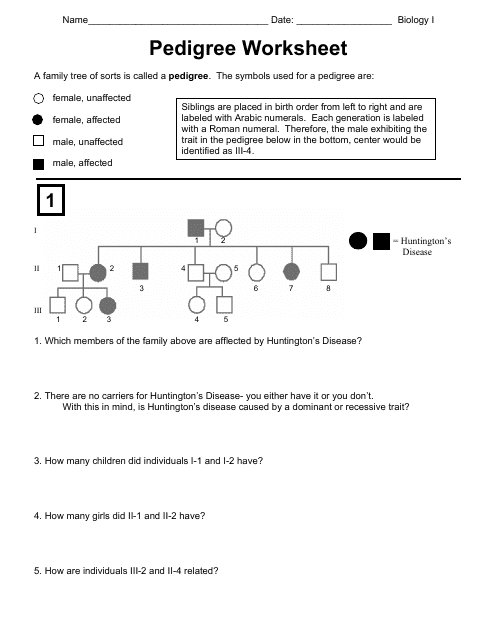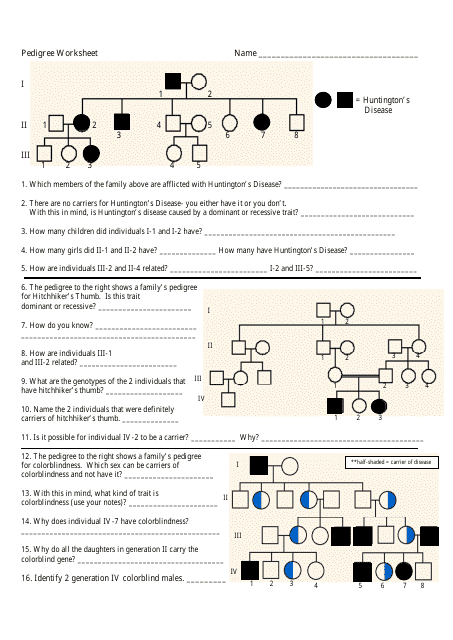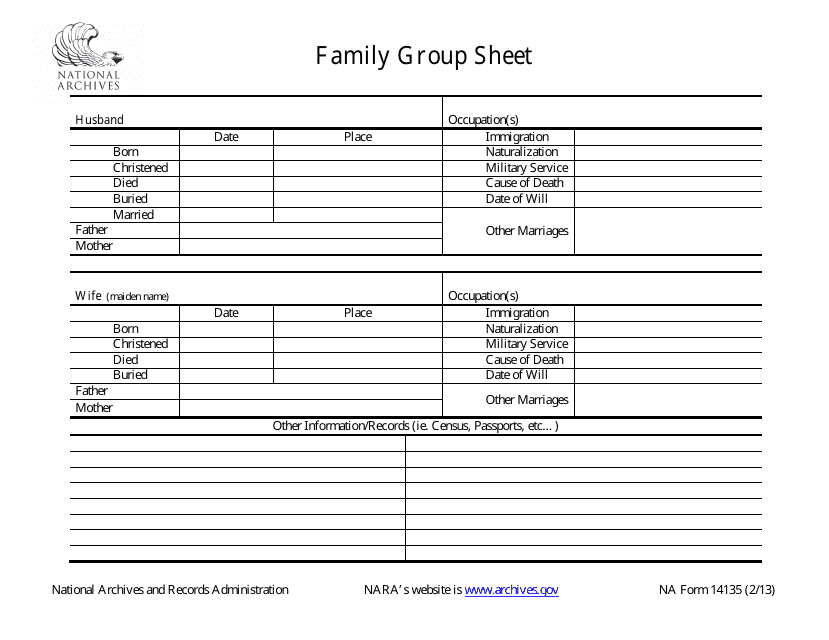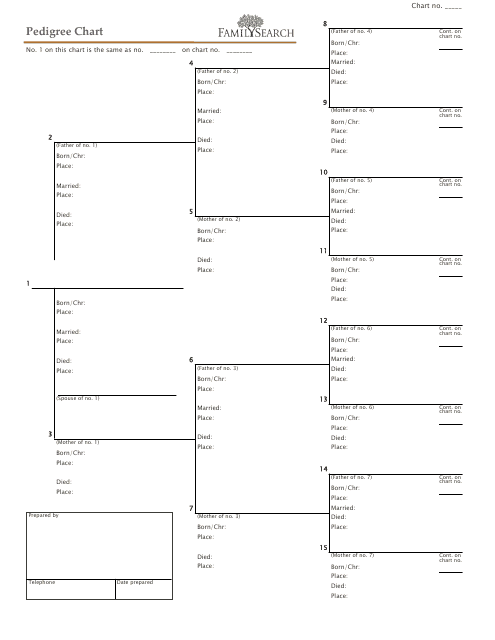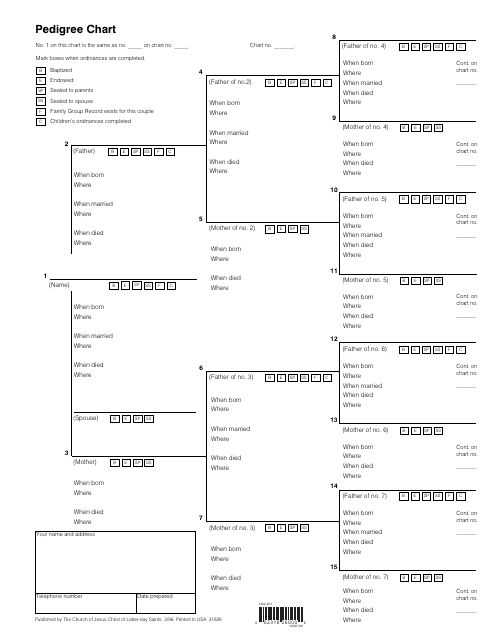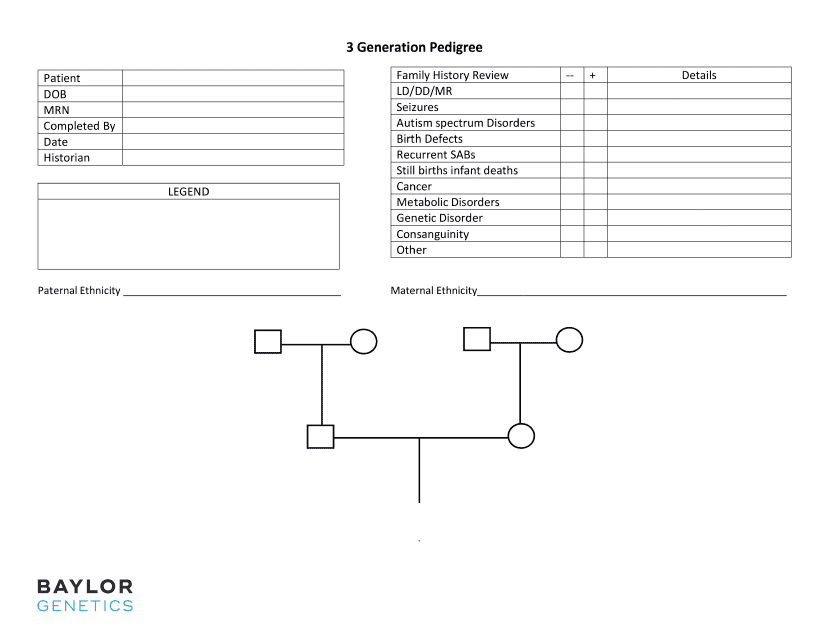Free Pedigree Chart Templates
What Is a Pedigree Chart?
A Pedigree Chart is a visual diagram used to represent the inheritance of certain traits within a family. If you want to identify how particular characteristics or disorders transfer from generation to generation, you should work on an instrument that outlines the genetic history of your own family or some other family you are interested in.
Although those predictions are not always precise, it is fun to follow the lineage of the family and see whose genes dominate. Besides, when you have an opportunity to map out the medical issues the previous generations of your family have suffered from, it enables you to see how likely it is for you and your children to have the same problems in the future and take necessary precautions - use the chart to learn more about your own history and protect yourself and your kids.
For a full list of Pedigree Chart templates please check out our library below.
How Does a Pedigree Chart Differ From a Family Tree?
Many schoolchildren are asked to come up with a family tree for their own family - this gives them a chance to talk to their family members and discover names of great-grandparents, aunts, uncles, and distant cousins they may not have heard before. This is also a fulfilling activity for any adult who is trying to see their place in the world from the perspective of family relations.
Family trees do not focus on specific traits apart from gender (in some cases) - they are mostly created to help the person learn more about their ancestors without exploring what common characteristics people may or may not have with their parents or grandparents. Although both tools play a significant role from the genealogical point of view, a simple Pedigree Chart focuses on medical history and features of appearance that often manifest in children and grandchildren.
How to Make a Pedigree Chart?
Here are some tips that will help you create a Pedigree Chart from scratch:
-
It is a good idea to devote the chart entirely to a single characteristic - for instance, brown eyes are considered to be dominant over green eyes. If the father of the child has green eyes while the mother is brown-eyed, it is likely their offspring will have brown eyes as well. The eye color of the grandparent might have an impact as well - in case the grandmother had blue eyes, there is a slightly bigger chance her grandkid has blue eyes.
-
Come up with a list of symbols you will use on your Pedigree Chart template . It is up to you to decide what shapes to feature; we advise you to depict a man with a square and a woman with a circle. People that have a particular trait will have their shapes filled in with color while individuals that only carry a gene for a specific trait can be marked with stripes. Draw a tree similar to a diagram you would use for a family tree - start with the oldest generation you are aware of and use arrows and lines to connect them with their offspring. Continue until you reach the youngest generation - you or your children. Make sure the chart clearly differentiates between siblings and their partners if the union resulted in childbirth which lets you analyze inheritance patterns.
-
You may turn a family tree into a Pedigree Chart . If you already prepared a diagram with the names of all your relatives, it is a great idea to find out how many members of your family have a certain health condition or how frequently a person with natural curly hair is born in your family. Discuss this matter with your family and go through old photo albums to understand how genetics work. It is also an entertaining activity to discover genetic variations by researching famous families whether they exist in the real world or come from a fictional universe - teachers can explain the basics of dominant and recessive traits by showing pictures of celebrities and illustrations of book or movie characters to engage the kids in the learning process.
Still looking for a particular template? Take a look at the related templates below:
Documents:
10
This document is a blank template for creating a pedigree chart, which is a visual representation of a person's family tree.

